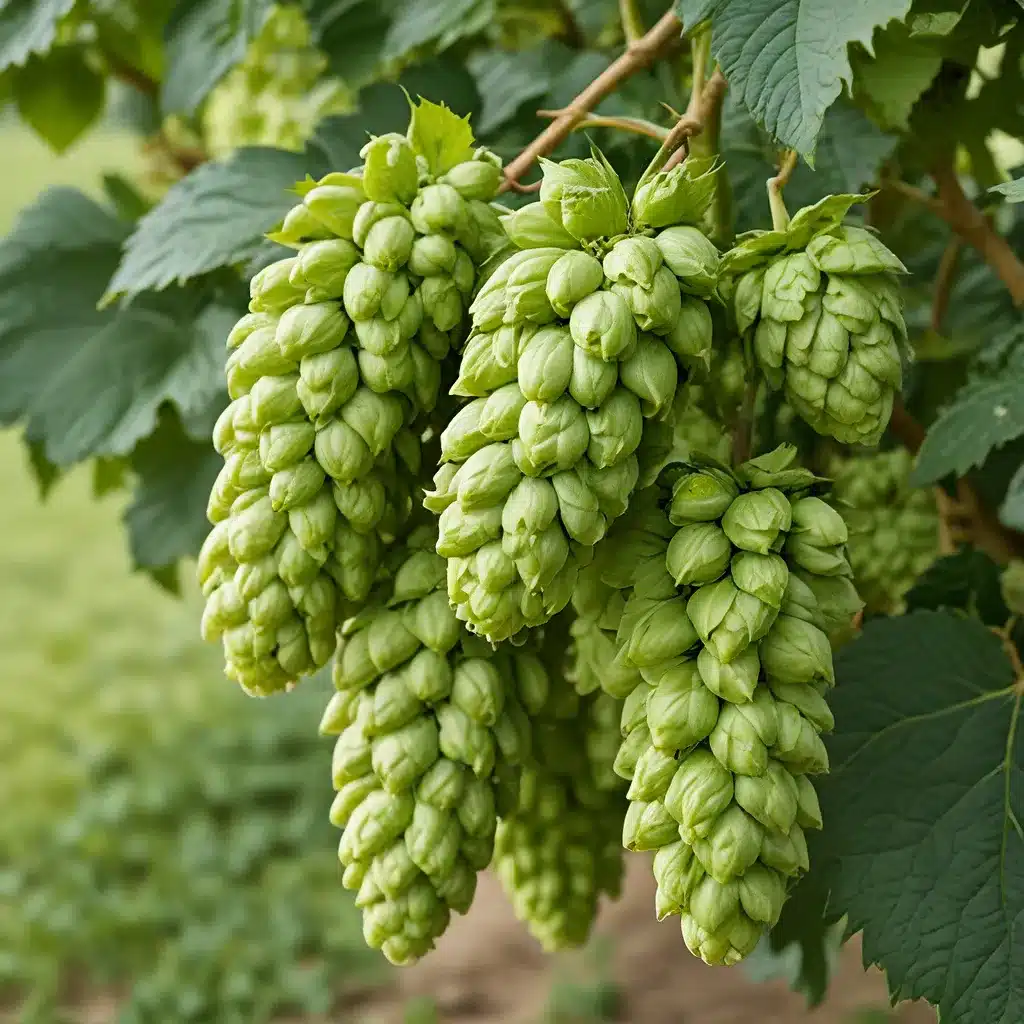
Brewing Up Perfection: The Art of Hops
As a passionate coffee connoisseur, I know all too well the importance of getting the perfect brew. It’s not just about the beans, you see – it’s about the entire process, from the grind to the extraction. And let me tell you, a long black is the ultimate test of a barista’s skill. One wrong move, and you’re left sipping something undrinkable.
But you know what? That’s not so different from brewing beer. Just like a good cup of coffee, crafting the perfect pint requires precision, attention to detail, and a deep understanding of the key ingredients. And when it comes to beer, there’s one ingredient that really takes center stage: hops.
Unveiling the Hop Mystique
Hops, my friends, are the unsung heroes of the beer world. These little flowers (yes, flowers!) of the Humulus lupulus plant are responsible for that signature bitterness, aroma, and flavor that we all know and love. But hops are so much more than just a bittering agent – they’re a veritable playground of possibilities, each variety offering its own unique characteristics.
Think about it like this: just as there are countless coffee bean origins, roast profiles, and brewing methods, the world of hops is a vast and varied landscape. From the citrusy and tropical notes of New Zealand hops to the earthy, herbal tones of European varieties, there’s a hop out there to suit every brewer’s taste. And the best part? You can use these hop superstars to personalize your brews, much like a barista would use milk to add a little something extra to a long black.
Navigating the Hop Spectrum
Now, I know what you’re thinking: “With so many hop varieties out there, how do I even begin to navigate this hoppy world?” Well, my friends, that’s where I come in. Let’s dive deep into the world of hops and explore the unique traits of some of the most popular varietals.
Citrus Burst: The Zesty Hops
If you’re a fan of bright, citrusy flavors, then you’ll want to keep your eye on hops like Citra, Mosaic, and Amarillo. These hops are known for their punchy grapefruit, orange, and even lemon-lime notes, adding a refreshing zing to your brews. Imagine sipping on a crisp, zesty pale ale on a hot summer day – that’s the kind of magic these hops can bring to the table.
Tropical Temptation: The Fruity Hops
But what if you’re craving something a little more exotic? Enter the tropical hops, like Mosaic, Simcoe, and Galaxy. These hops are like a tropical vacation in a glass, delivering flavors of pineapple, mango, and even passionfruit. They’re perfect for creating those juicy, hazy IPAs that have been taking the craft beer world by storm.
Earthy Elegance: The Herbal Hops
Of course, not everyone is a fan of the fruit-forward hop profiles. If you prefer a more nuanced, herbal character, then you’ll want to explore hops like Hallertau, Tettnang, and Saaz. These hops bring a touch of sophistication to your brews, with notes of spice, earth, and even a hint of floral sweetness. They’re the perfect complement to crisp lagers and malty ales.
Dank Delights: The Resinous Hops
And then there are the hops that simply defy categorization. Hops like Cascade, Columbus, and Centennial are often described as “dank,” with their bold, resinous, and sometimes even piney flavors. These hops are not for the faint of heart, but they can add a truly unique character to your brews, especially in big, beefy IPAs and stouts.
Crafting Your Hop Masterpiece
Now that you’ve got a better understanding of the hop spectrum, it’s time to start experimenting. And let me tell you, dry-hopping is where the real magic happens. Just like a barista can use milk to create the perfect balance in a long black, you can use hops to fine-tune your brew and bring out those specific flavors and aromas you’re after.
The key is to think about the overall flavor profile of your beer and then choose hops that will complement or amplify those characteristics. If you have a light, crisp lager, a touch of citrusy hops might be just the thing to add a refreshing twist. Or if you’re brewing a robust stout, a dose of earthy, resinous hops could add depth and complexity to the experience.
And remember, at the end of the day, the most important thing is to have fun and experiment. Don’t be afraid to try new hop combinations, play with different dry-hopping techniques, or even blend multiple hop varieties. After all, that’s the beauty of brewing – it’s a never-ending journey of discovery.
Hop-Fueled Inspiration
So, the next time you’re strolling down the aisles of your local homebrew shop, take a moment to stop and smell the hops. Let their intoxicating aromas transport you to a world of endless possibilities. Because in the realm of beer, hops are the true stars of the show, and understanding their unique characteristics is the key to crafting your own hop-fueled masterpiece.
Who knows, maybe one day you’ll even be able to impress your friends with your barista-level hop prowess. Because let’s be honest, that’s the real mark of a true beer aficionado.

